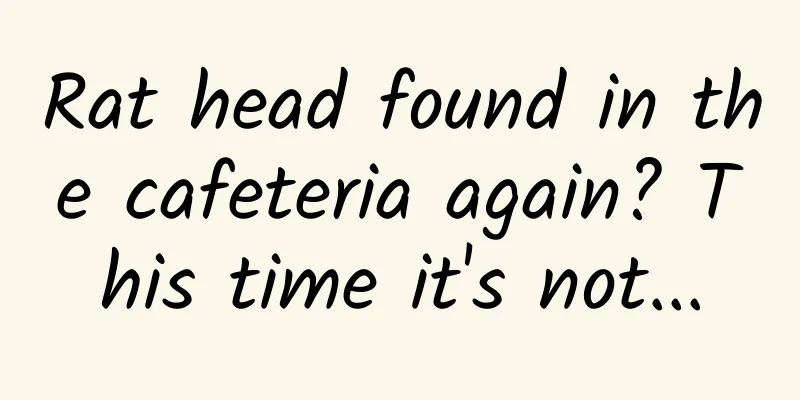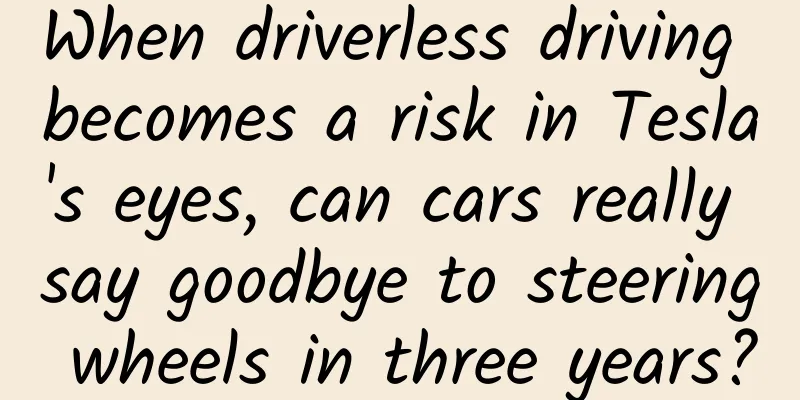Rat head found in the cafeteria again? This time it's not...

|
Recently, I saw the news online that a "rat head" was found in the school cafeteria. This time, the school immediately responded and found that it was the lip of a rabbit head. Image source: Sichuan Observation It is indeed difficult to distinguish whether a small animal like this is a rabbit or a mouse, but the intact teeth on the bones are an important feature for the naked eye to identify what it is. In the animal kingdom, mammal teeth are the most complex, and each tooth reveals the racial identity, living habits and physical condition of its "owner"... Fewer teeth, more power, simplicity is not simple Small and ordinary mice have been around for thousands of years, and their numbers and species are very impressive. Among the nearly 6,000 existing mammals, rodents account for 40% , including house mice, squirrels, guinea pigs, porcupines... There are 33 families and about 2,500 species! Rattus norvegicus and its skull. Image source: Tang Zhiyuan Rodents are born with the instinct to chew. But when you see a mouse skull, you may be surprised to see only a few teeth! We humans have 32 teeth neatly arranged on the gums, while the common house mice, voles and pet hamsters have only one pair of incisors and three pairs of cheek teeth in each upper and lower jaw, for a total of 16 teeth , which is a very simple configuration. From nest mice weighing only a few grams to capybaras weighing 50 to 60 kilograms, the dental structure of all rodents is similar: 4 incisors , 4 to 24 cheek teeth (including molars and premolars), and no canines. There is a gap between the incisors and cheek teeth of rodents, which is called the "diastema". Hamster's incisors. Rodents have only four incisors, half the number of our eight, but they can continue to grow. Image source: Yinuo If you open the rabbit 's three-lobed mouth, you can see a pair of large upper and lower teeth, and two very small columnar incisors on the back of the two upper incisors . This pair of incisors is also called "pillar teeth" and is the key to identifying the lagomorph skull. The incisors keep growing and become sharper as they are sharpened. Whether alive or in the form of skeletal specimens, the most obvious feature of rodents is the four "big teeth" on the upper and lower sides - the incisors. These four incisors are the foundation of their existence. The word "gnaw" in rodents refers to the habit of mice to frequently grind their teeth. Especially for house mice living next to humans, they will gnaw even inedible materials such as wood, plastic, and rubber, which brings endless troubles to humans. But mice are helpless about this - grinding their teeth is a matter of life and death for them. The teeth of mammals generally go through a process of “birth, aging, illness and death”: when a tooth grows to the appropriate size, the root at the bottom of the pulp cavity will be sealed, and no more tooth substance and blood will flow in, so the tooth stops growing and is used until it is scrapped. However , the incisors of rodents do not have roots, and the bottom of the pulp cavity is not sealed, so the incisors can continue to grow throughout their lives and “remain youthful”. Like mice, rabbits also have "eternal teeth" without roots, which require constant chewing. However, rabbits do not belong to the order Rodentia, but to their own order Lagomorpha. However, rabbits are not as well off as mice. There are only two families, Leporidae and Ochotonidae, and more than 80 species. Compared with mice, rabbits are purer herbivores. Their skeletal structure and digestive system are different from those of rodents, and they also have the habit of eating feces, which is an "alternative rumination". Back to rodents, only the front half of their incisors are covered with hard enamel, and the back half is not protected by enamel, which makes them more easily worn when biting, making the incisors thinner and sharper. In other words, they don't have to worry about wearing down their incisors, but the more they grind, the sharper they become ! But if they can't find something hard to grind their teeth, their incisors will grow too long, and they will starve to death because they can't bite. Image source: A social platform Chewing is a two-step process, with teeth taking turns Rats in cartoons often have pointy heads and pointed brains, but in fact, compared with insectivores such as shrews and hedgehogs, rodents do not have pointy heads. Pet rats such as hamsters and guinea pigs can even be said to have round heads. This is because rodents have well-developed chewing muscles in their heads, which "brace" their heads into a round shape. These muscles not only give them a bite force that is disproportionate to their body size, but also control the forward and backward movement of the lower jaw, performing the two eating processes of biting and chewing. When mice bite food into their mouths, their lower jaws push forward to make the upper and lower incisors bite perfectly, while the upper and lower cheek teeth are misaligned and cannot bite together, which is a state of "gnawing but not chewing". When mice grind their teeth, they only grind their incisors and do not bite their cheek teeth, and the crumbs they chew are directly spit out. When mice gnaw on food, they push their lower jaw forward and bite their upper and lower incisors together, only gnawing but not chewing. When mice chew food, their lower jaw retracts and their upper and lower cheek teeth bite together, so they only chew but do not gnaw. When mice open their cheeks to eat and drink, their lower jaws retract and the upper and lower cheek teeth bite to chew food. At this time, the upper and lower incisors are in a state of one in front of the other and do not interfere with each other, that is, "chewing but not gnawing". The indestructible incisors, developed chewing muscles, and this "chewing and chewing asynchronous" eating method allow rodents to chew hard plant seeds, rhizomes and grass leaves with a smaller body size, thus gaining an advantage in the competition for survival. A rabbit that looks like a mouse, a mouse that looks like a rabbit Sometimes it is really hard to tell rabbits and mice apart. For example, look at the following image: is it a mouse or a rabbit? Small round ears and small black eyes, you must be a rat! . Image source: Zhou Jinshuai It is a plateau pika of the genus Ochotona in the family Ochotonidae in the order Lagomorpha . It is distributed in the Qinghai-Tibet Plateau and nearby areas. It is not a rodent. Their daily life is to dig holes and eat grass. Look at what it is—— You have big eyes, pointy ears, and your hind legs look like you can run fast. You must be a rabbit. Image source: Yunnan Wildlife Park It is the Patagonian guinea pig, also known as the Argentine long-eared guinea pig . It is a rodent of the genus Cavia of the family Cavia. It does look like a rabbit, so it is also called a rabbit guinea pig. It doesn’t matter if you can’t recognize them, as long as you can recognize them in your food… Planning and production Source: Bowuzai (ID: bowuzai) Author: Lu Lu Original editor: Zhao Zhiyu This article was originally published in the August 2017 issue of Museum magazine. Editor: Yinuo |
<<: Chronic stress may be affecting your brain without you even realizing it
>>: It's not snowing, it's a white desert
Recommend
Painting Story | Over the years, humans have had misunderstandings about rabbits...
Rabbits are so cute, how can you not know their l...
These 7 types of vegetables have "toxins" and must be blanched before eating! One of them is in season now!
Blanching is one of the cooking methods we usuall...
Can the emergence of Sony's HDR high-tech keep LCD as the mainstream?
Often, people tend to compare the pros and cons o...
Apple has sent out invitations to its new product launch event in October 2014. It’s been a long time since we last saw it!
Apple officially sent out invitations to the medi...
Life is too tense? Maybe you need a little relaxation
A netizen shared an experience that she envied: a...
7 directions for optimizing medical bidding plans!
The SEM bidding promotion team concluded that a g...
Segment your users and how to conquer them one by one?
Today, we will talk about practical techniques fo...
How to run Python code on iPad?
In fact, it’s not just iPads, mobile phones can a...
What? The Earth briefly has a "second moon"? It's a limited-time "mini moon"!
According to astronomical experts, the Earth has ...
Eight car brands suddenly recalled 770,000 vehicles on the eve of March 15
March 15 is a Chinese event, especially for the a...
If you work in the Internet industry, do you really understand traffic analysis?
In my current job, I come into contact with many ...
I asked those friends who have successfully lost weight, and the secret turned out to be...
Are there any staple foods that I can eat to lose...
Meituan responded to the cancellation of Alipay. Why did Meituan cancel Alipay again?
Meituan responds to cancellation of Alipay July 3...
How far is it from actual combat to use unmanned equipment to improve logistical material support?
There is no doubt that the status and role of unm...









